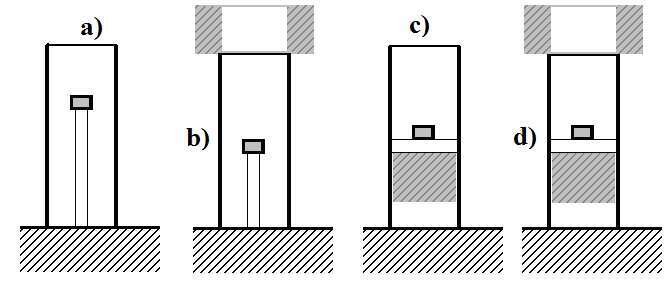A robust blast inhibiting bin is the most often used device for damage blast effects suppression. In particular, a top open cylindrical bin significantly reduces a fragmentation effect resulted from a detonation of an explosive device placed inside the bin. However, reduction of blast wave overpressure and impulse by such cylindrical bins is insufficient [1].
A reasonable alternative to endless increase of height and thickness of robust blast inhibiting bins is a development of destructible inhibitors having no solid elements in their structure and, therefore, excluding secondary fragmentation. So, the family of “Fountain” inhibitors [2, 3] localize and suppress damage blast effects due to multiphase working system.
The present study is analyzing data obtained in testing of prototypes of new combined inhibitors. Their structure combines robust elements (bottoms, side surfaces) with elements responsible for blast loads reduction due to multi-phase working system (top and low transverse embeddings) and fairings impeding wave propagation in undesirable directions.
Field tests of new cylindrical blast inhibiting bin prototypes have revealed significant reduction of shock blast wave parameters due to embeddings with the multi-phase system located both on the top and on the bottom of a small charge (0,2-0,4 kg TNT). Reduction of blast effects parameters due to multiphase working system located inside a blast bin below a charge is rather nontrivial result. When the use of the blast inhibiting bin prototype of a basic modification (Fig. 1a) showed 2,5-3,5 times reduction of the blast overpressure and 3,0-3,4 times reduction of the impulse, the combined blast inhibitor (Fig. 1c) showed 8,5-12,2 and 8,5-9,8 times reduction of those parameters, respectively.

Fig. 1. Principle diagrams of blast inhibitors: a) cylindrical bin of basic modification; b) combined blast inhibitors with multi-phase system embedding located above charge; c) bin with embedding below charge; d) combines bin with two multi-phase embeddings
Further study and field tests of combined blast inhibiting bins includes increasing power of charges to be suppressed.
References
- Gelfand B.E., Silnikov M.V., Chernyshov M.V. On the efficiency of semi-closed blast inhibitors // Shock Waves. 2010. Vol. 20. No. 4. Pp. 317-321.
- Vasil`ev Yu.S., Gelfand B.E., Silnikov M.V. Impulse-energy technologies assisted with mitigation systems // Izvestiya Akademii Nauk. Energetika. 2004. No. 6. Pp. 7-19.
- Silnikov M.V., Mikhaylin A.I. Protection of flying vehicles against blast loads // Acta Astronautica. 2014. Vol. 97. Pp. 30-37.

